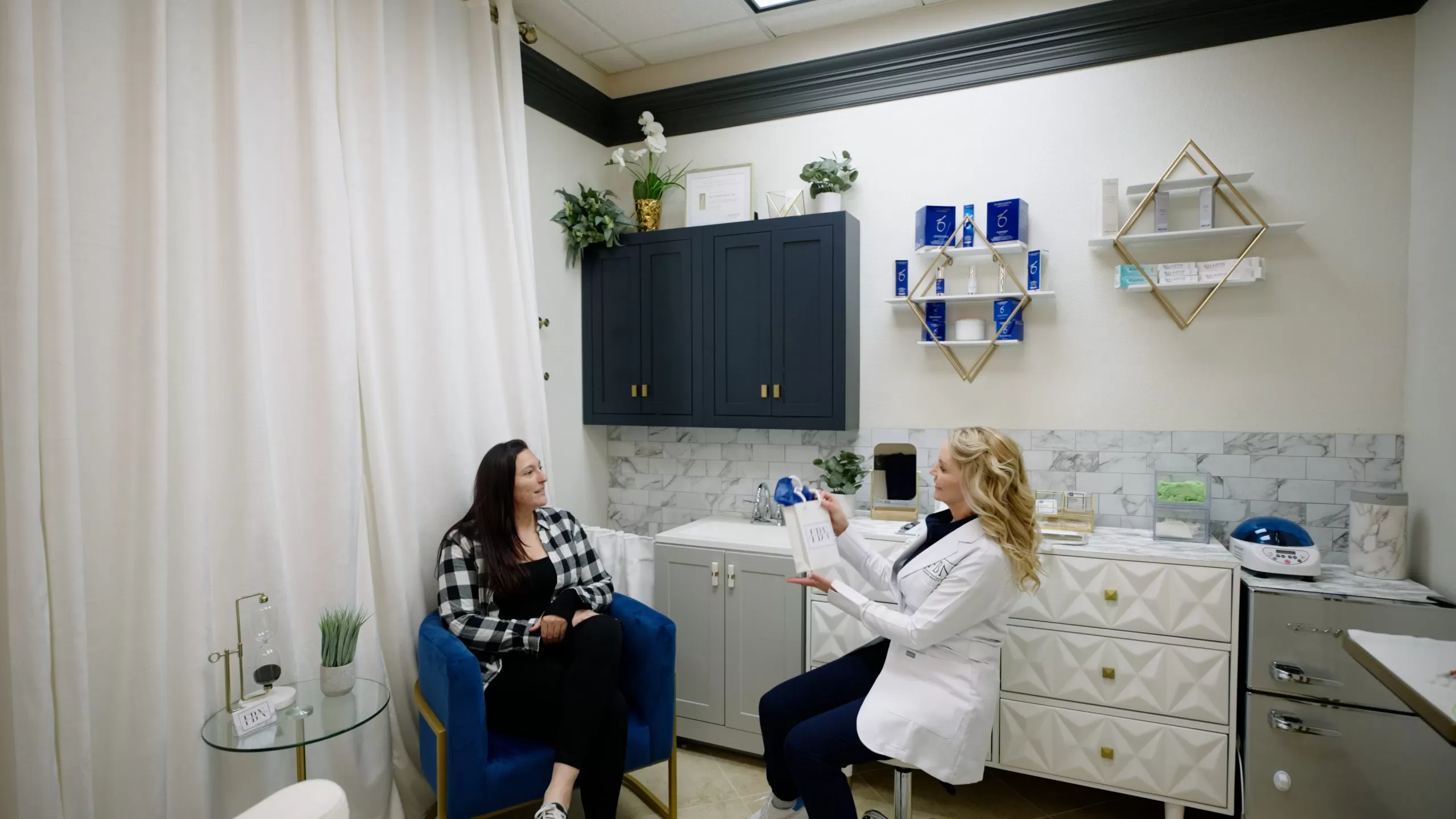
What Is Acne and Why Does It Leave Marks or Scars?
Acne is one of the most common skin conditions, caused when pores become clogged with oil, dead skin cells, or bacteria. It can appear as blackheads, whiteheads, papules, or deeper cystic lesions, and while it’s often associated with adolescence, acne can affect both teens and adults. Breakouts most often occur on the face, chest, back, and shoulders—areas with the highest concentration of oil glands.
Even after active blemishes clear, the skin may not heal evenly. Some people develop post-inflammatory hyperpigmentation (PIH)—dark spots or red marks left behind after inflammation. Others experience textural scarring, such as small depressions or raised areas caused when the skin’s deeper layers are damaged during a breakout.
While these marks and scars are not harmful, they can be frustrating and impact self-confidence. The good news is that modern treatments can effectively smooth texture, even skin tone, and restore a healthy glow.
Book AppointmentTypes of Acne Scars and Post-Inflammatory Pigmentation
Not all acne scars are the same. The way your skin heals after inflammation determines whether you’re left with indentations, discoloration, or raised texture. Understanding these differences helps us choose the right combination of treatments to restore smooth, even-toned skin.
Atrophic (Depressed) Scars
These appear as small indentations where collagen loss has occurred during healing. Common forms include:
- Ice pick scars – deep, narrow marks that look like tiny punctures.
- Boxcar or rolling scars – broader areas of uneven texture that can cast shadows or appear wavelike.
Hypertrophic (Raised) Scars
These develop when excess collagen builds up as the skin repairs itself, creating thicker or firm tissue. While less common on the face, they may appear on the chest, shoulders, or back.
Post-Inflammatory Pigmentation (PIH)
Even when acne doesn’t leave texture behind, it can leave dark spots or red marks where inflammation once was. These areas of uneven pigment are not scars, but they can persist for months without targeted treatment. Sun exposure and inflammation can deepen their color, making professional care essential for fading and prevention.
Treating Acne Scars and Pigmentation at Frisco Beauty Nurse
Acne scar and pigmentation correction at Frisco Beauty Nurse focuses on regenerating your skin—not just resurfacing it. We combine advanced treatments that stimulate collagen, smooth texture, and even skin tone for lasting improvement.
Depending on your skin needs, we may recommend:
- Microneedling with PRF or EZ Gel – boosts collagen and elastin to soften scars and brighten skin naturally.
- Chemical Peels – resurfaces the top layers and fades post-inflammatory pigmentation for a more even complexion.
- Diamond Glow® Facials – deeply exfoliates, extracts, and infuses medical-grade serums to smooth and clarify.
- Sculptra® – a collagen biostimulator that gradually improves skin thickness and scar depth.
- PDO Smooth or Twist Threads – create subtle lift and collagen remodeling in scarred or uneven areas.
- Medical-Grade Skincare – customized home regimens to prevent future breakouts and support ongoing pigment control.
Every plan begins with a personalized Beauty Plan consultation, where we assess your skin type, scar pattern, and pigment concerns to design the most effective treatment sequence for you.
